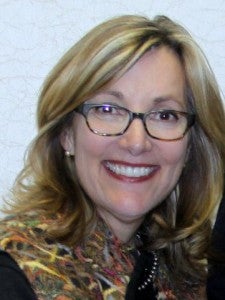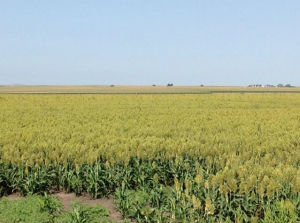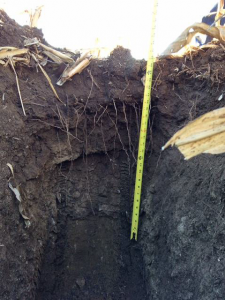 Christine Hamilton and her family have been farming and ranching in central South Dakota for more than 120 years – and they hope to still be farming there 120 years from now.
Christine Hamilton and her family have been farming and ranching in central South Dakota for more than 120 years – and they hope to still be farming there 120 years from now.
But to be able to ensure the long-term viability of her family’s farm, Christine and her colleagues at Christiansen Land and Cattle (CLC) knew that they would need to take a step back, look closely at their operations, and set a vision for the future.
Tools and certification programs can help farmers like Christine to measure and understand the sustainability of their farm and ranch operations, and to set specific goals. But none of these platforms was a good fit for CLC, which raises crops such as corn, soybeans, and winter wheat, as well as cattle. So Christine led the development of a customized sustainability management plan for CLC that articulates what is important to them now and what they want to improve in the future.
Here, in honor of USDA’s new focus on women in agriculture, I ask Christine about her farm’s visionary plan.
What does sustainability mean to your operations?
 Sustainability is just another word for survivability. For us, it means economic viability first – we can’t be sustainable without being profitable. We need to be profitable in order to invest and reinvest in measures that allow us to leave the land in as good or better condition than when we found it.
Sustainability is just another word for survivability. For us, it means economic viability first – we can’t be sustainable without being profitable. We need to be profitable in order to invest and reinvest in measures that allow us to leave the land in as good or better condition than when we found it.
During the past 15-20 years, the farm has been involved with several USDA conservation programs and used conservation tillage, variable rate technologies, cover crops, optical technology, and soil health measures. We also are trying to understand how we can increase yields with the same or even fewer inputs – thereby saving money and potentially reducing fertilizer use. Our core philosophy involves striving for continuous improvement.
Why did you decide to create a sustainability vision for your operation?
I have been involved for several years, through a producer group called Triple Bottom Line, LLC, with The Sustainability Consortium, a group of more than 100 organizations working to inform decision makers on the sustainability of consumer products by evaluating supply chains and lifecycles. There is a lot of progress being made when it comes to evaluating the food supply chain, but I didn’t think the discussions included the conservation concepts and tools that producers are already using.
I wanted to be able to articulate what growers are already doing in a quantifiable way, so that we could understand and set baselines for conservation activities. Once we have a baseline, we can evaluate whether or not our efforts are effective going forward.
So, we worked with our agronomy advisors from Agrinetix to create our own standards and processes for sustainability. We needed to understand what made sense for us economically, considering our people and communities, as well as the environment.
What does the sustainability management plan entail?
In order to determine which components to focus on for the future, we created a weighted ranking process that will help us gauge our priorities on several dimensions, including environmental dimensions such as wind erosion and water quality. We are looking at all of our operational elements and from there we will move toward evaluating emissions of greenhouse gases, air and water quality, energy usage, and social benefits such as community impacts.
It’s an evolving process and we are still working on what these definitions even mean as an industry, and what the impacts and implications will be for producers.
Energy use scored low for us on this first pass, for example, because the farm uses comparatively little electricity, so we won’t focus on improvements in that area right away. However, water quality and quantity scored high for us, so we know we want to work on that. The important thing is that all of these findings included direct input from our team, who are the right people to include when deciding which practices fit best for our organization.
What is next for CLC?
The sustainability plan will be finished by the summer, and we’ll then set up quarterly meetings to review our progress with implementing the plan, make revisions if necessary, and continue to establish new priorities.










